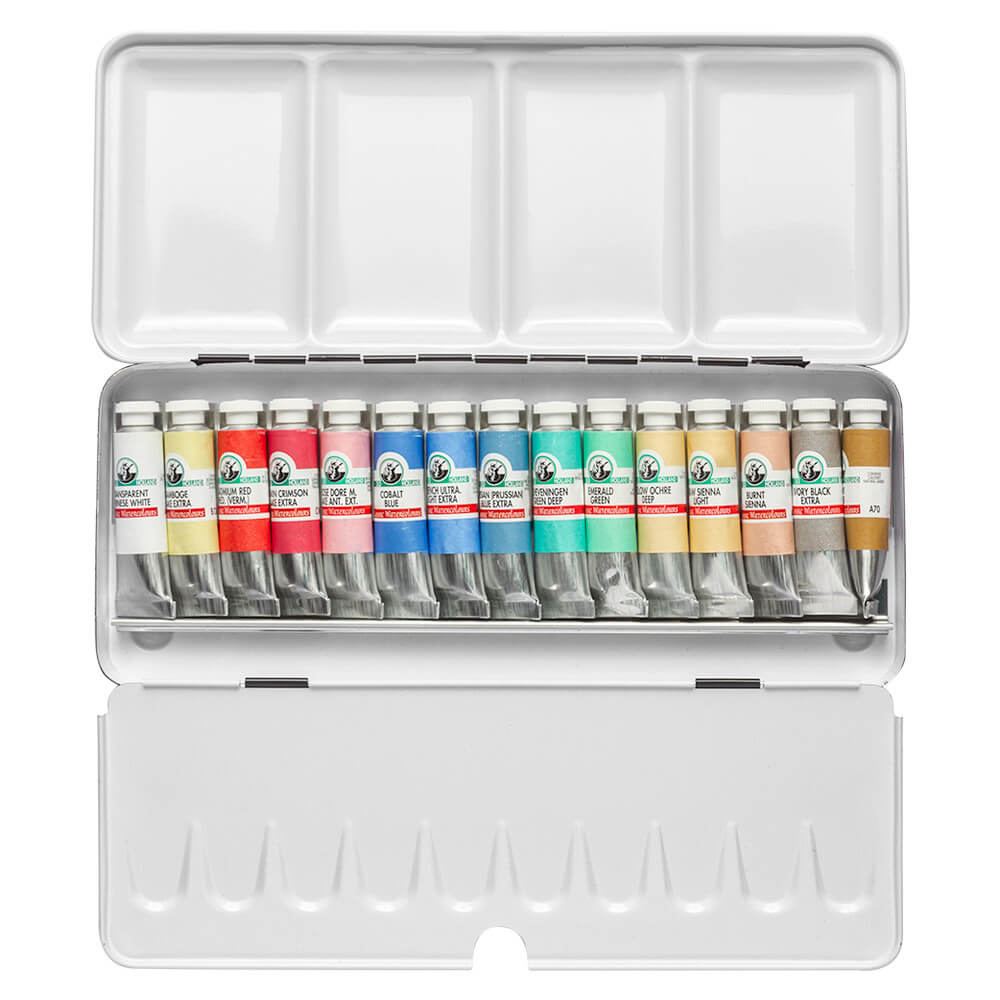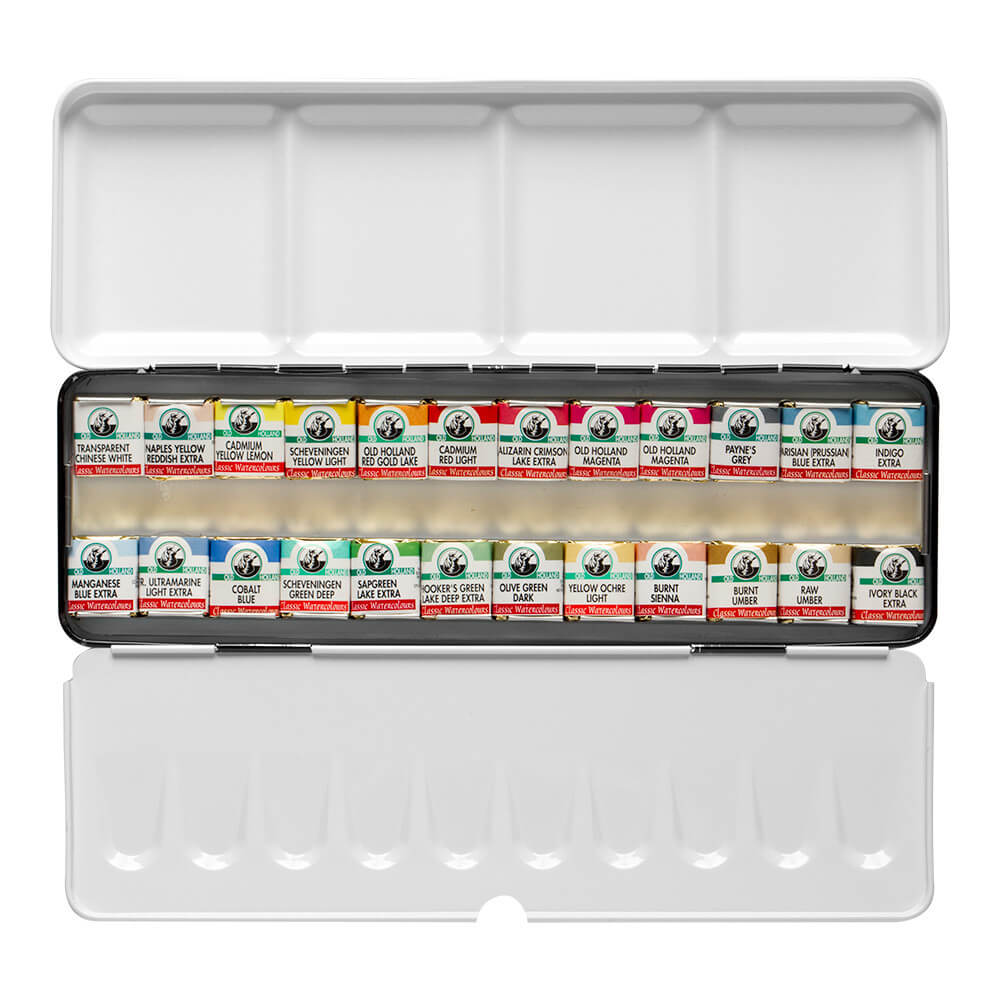
Watercolours: tubes or pans?
Watercolours generally come in tubes or pans. So what exactly is the difference between them? Let’s take a look at the difference between these two varieties, including the advantages that each of them offers, so that you can decide which type of paint might be best for your painting.
The most important thing to understand is that watercolours sold in tubes are no different from watercolours sold in pans when it comes to quality. The only difference is that watercolours in pans go through an additional stage – drying – during the manufacturing process. Watercolours in tubes are immediately poured out into tubes.
This is what the main difference, as far as the artist is concerned, stems from: watercolours in tubes can be used straight away, whereas watercolours in pans need to be rehydrated first. It is up the artist to decide what the best option is in each specific case.
Watercolours in tubes
Tubes are often selected in the following cases:
- When artists are working with large volumes of paint. Watercolours in tubes are handy when an artist is working with large paper formats, and for filling in large sections of works.
- For refilling pans. Tubes of watercolours are more economical and are suitable for refilling empty pans. There are some paints for which it is generally more convenient to use pans. For example, cerulean and cobalt from pans bubble up slightly, or it can be hard to find the right pigment of yellow ochre; this is where tubes can help you out.

How to use watercolours from tubes
Squeeze a small amount of paint onto the palette and mix it with water. That’s all there is to it!
Pros:
One of the biggest advantages of watercolours from tubes is the fact that they provide a concentrated amount of colour, so the colour will instantly be more vivid.
Cons:
If you don’t screw the lid back on firmly, your paint will dry out, forming a plug, and it’s then very hard to squeeze the paint out of the tube; in your efforts to unblock the tube, you’ll squeeze it hard, and then you won’t be able to control the paint when it comes pouring out.
Watercolours in pans
Watercolour paints in pans are supplied in the form of little rectangular ‘cakes’, which are each packed into their own separate recess in the box. They are extruded under pressure, and this is what compresses them into ‘cakes’. They are dry to the touch, but when you add a little water to them, it ‘activates’ them.

How to use watercolours from pans
Wet your brush and then dip it into the pan to obtain some pigment. Once again, it’s no more complicated than that!
Pros:
These paints are easy to carry around, and you don’t have to worry about the paint getting jammed inside a tube. They last a long time. Even 10 years after you first bought them, they will still do a remarkably good job. They are genuinely one of those rare things that you can pass on from generation to generation!
Cons:
Since you need to wet your brush and dip it in the paint, it might take you a while to obtain paint that is of good working consistency. If this is the case, it could be problematic when you’re working on large projects. Some pigments are more difficult to use than others, and will require more water.
Moreover, if you leave your box of paints uncovered, dust could get into the pan and then you’ll end up with little stains in your pictures. So always ensure the lid on your box of paints is firmly shut (or at least that it covers the paints).
Can you use tubes and pans simultaneously?
Yes, you can use watercolours from pans and tubes in the same painting. You can even combine one colour from a tube with other colours from pans.
Can they be interchangeable?
That depends on the level of accuracy of the shade you need. Since watercolours from tubes turn out more vivid, getting the same colour from a paint from a pan requires more paint and less water.
So which option should I choose?
Both varieties have their strong-points. Ultimately, it’s up to you. Paints in pans are practical and they are easy to carry around. They are irreplaceable for small paintings, generally up to and including the A3 format. When you’re working on large sections of a painting or on large-scale projects (A3 and above), it is very helpful to have a concentrated colour, which is provided in tubes. Your best bet, therefore, is to go with a combination of the two: have a set of your main watercolour palette in pans, and for the colours you often use on large surfaces, get some tubes.




